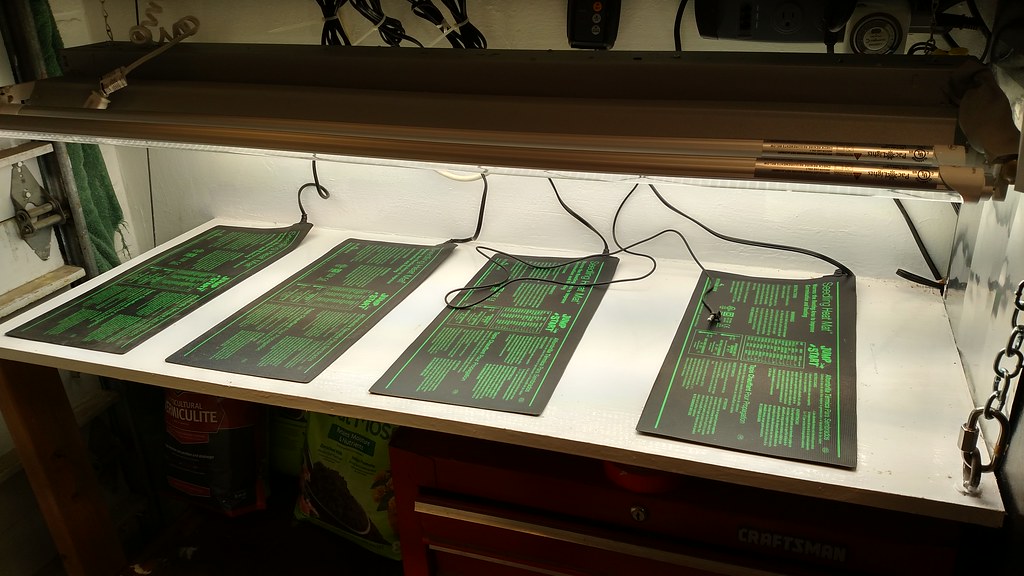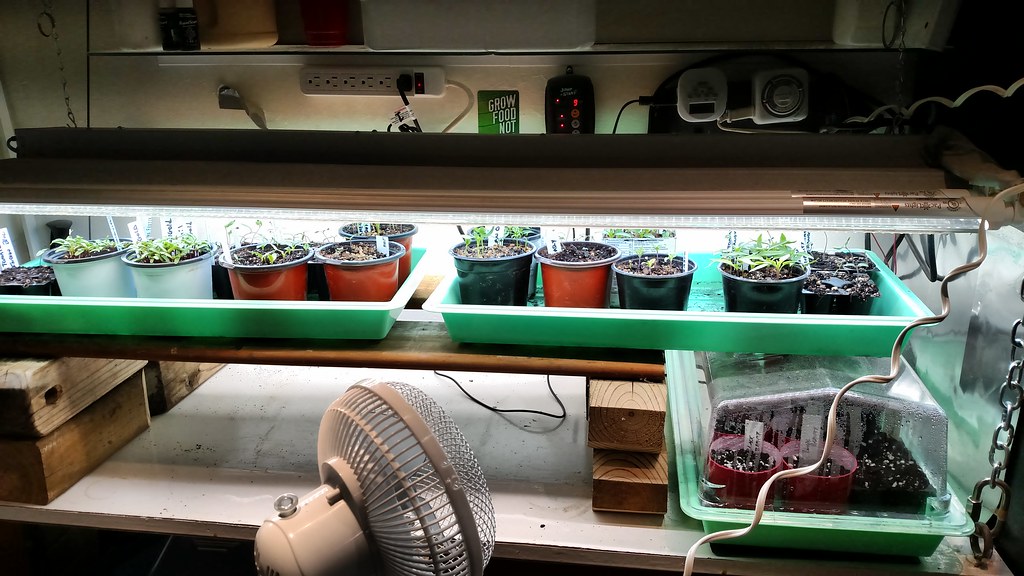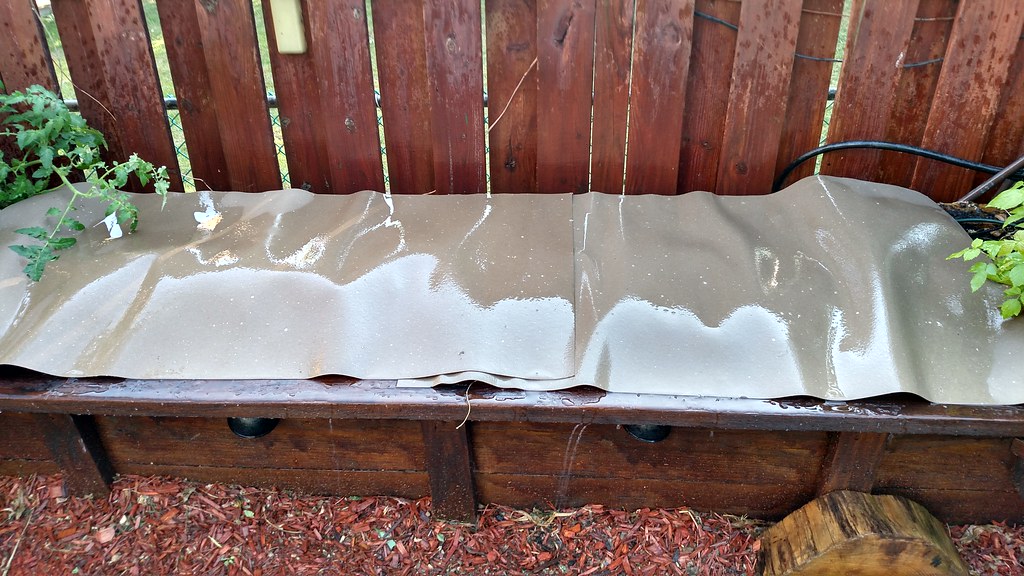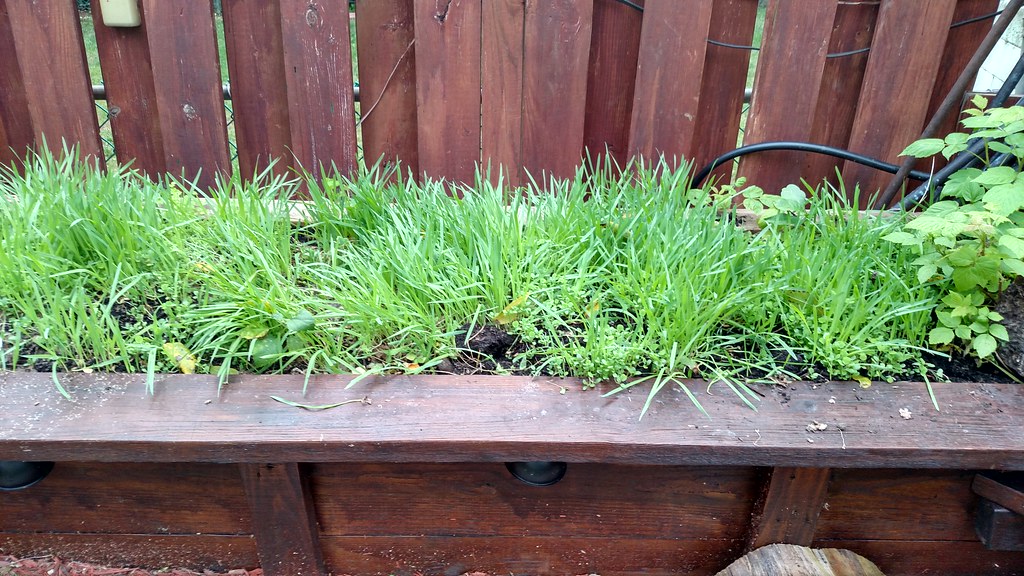Update on 6/15/2018:
A more comprehensive picture will be painted. Yes, I can hear the groans already.
I'm finally getting reliable germination on most seeds. It's too bad it took this long but that isn't unusual for my area. I tried planting cucumber and squash seed a while ago and, as I feared, I got terribly germination. The soil was probably not warm enough yet, despite the hot May.
I'm really hoping the cucumbers grow fast because I feel kind of stupid not having cucumbers in mid June. I feel a little less bad about the squash.
In fact the only thing I have that is havestable is leafy greens. Lots of lettuce and a fair amount of spinach. Peas are coming along nicely though. There are already some snow peas and the snap peas are putting out flowers.
The tomato and pepper plants already have some fruit on them but my mother handles those so I can't take credit.
There continue to be some frustrations though. I mentioned that something munched off the tops of my sunflower seedlings. I couldn't find that exact variety again so I got a different packed and resowed. I also started some of the seeds in pots to act as insurance. They will be transplanted once they get large enough not to be consumed by slugs.
I have close to a dozen ground cherry seedlings. I put most of them in the ground and... not much is happening. They are still alive, which is good. But their growth is incredibly slow. If they don't put on a serious growth spurt soon they won't produce. But if I had moved then outdoors earlier the cold would have killed them. These are Aunt Molly's ground cherries. If they do grow I hope to train them upwards on a trellis or tomato cage. If I have the equipment I want them to go vertical to save space. Also, I read that ground cherries drop when ripe (presumably the husk protects them) and I figure it will be easier to notice them dropping if the plants are vertical. I really am hoping to get a large amount of ground cherries so I can turn them into jam. I've also never tasted one and would like to try some.
The Millionaire eggplants have already put out a couple of blossoms. I think they are going to drop without fruiting because of the wall o' waters. But it's still much too cold at night to remove the wall o' waters. It also seems like the plants are too small to produce fruit at this point. If they do I might cut the developing fruit off to encourage the plants to put their energy into roots and leaves for a while.
The Black Beauty eggplant is still tiny and not doing much. This is to be expected as I've read that it's quite rare to get Black Beauty to flourish in our climate. So I'm not going to worry about whether it produces or not. Same with the honeydew melons. It's possible they will produce a melon or two.
Most things I started from seed are still tiny. Beans are only about a couple of inches tall. Bugs or something got to a few of them but for the most part they are still intact and they look pretty healthy. I'm hoping to get some beans from them in a month and a half or so. These are bush beans so I don't think I can train them vertical. The leeks and green onions will probably have to overwinter before they are large enough to harvest. Possibly the same with the carrots but I wouldn't be surprised if I have a few small carrots by mid July.
The next conundrum is when to plant for the fall. I know that most fall veggies are planted in July. Once September rolls around the days are significantly shorter growth slows way, way down. By October it has ground to a halt. So I need to get stuff in on time. At the same time I need to not put stuff in too early.
My understanding is that you don't want things to fully mature before first frost. Especially brassicas. I have some Hestia, Roodnerf, and Long Island Improved brussels sprouts seeds. As a precaution I sowed a row of Long Island Improved sprouts this week. I hope they don't mature in the heat of late August.
The same thing goes with broccoli, cauliflower, and leafy greens. I know that if I plant broccoli in August I won't get a harvest. I'm thinking of doing a massive broccoli planting binge in early July. Cauliflower and heading cabbage are a little trickier. Last year my heading cabbage and cauliflower rotted in the rain. So I am little trepidatious about planting them again. On the other hand I still want to grow them and harvest them in winter if I can.
I'm also hoping to get some seeds for cold hardy lettuce. If the winter is mild they might survive the winter. I'd love to be able to pick fresh lettuce in December. I hope for spinach t play a prominent role as well. I am thinking of getting this mix:
http://www.territorialseed.com/product/yukon-winter-lettuce-mix-seed
I've also read that Continuity is a good lettuce for cold weather. I guess we'll find out.
I'd also like to grow miner's lettuce. It is supposedly very cold hardy and makes ok salads. I'll probably put in some mache/corn salad as well.
Last but not least I would like to try cover cropping this winter. But I will have to find a way to plant cover crop seeds when the warm weather crops are still going. I might be able to stick some seeds betweens the rows of corn. I'm hoping to cover crop with winter wheat and cereal rye. I've read that those will germinate even in October. Probably not very well and the birds will probably attack the seeds and seedlings. I can't put bird netting over the entire garden so I guess I'll just have to live with it.
I also have a fava beans plan. I planted Sweet Lorane favas last fall. The overwintered nicely but they were in the way so they got sent to the compost heap. They didn't have enough time to produce beans. But there was one plant in a pot that I left alone and, frankly, neglected. I took a look at it a month ago and it is starting to produce flowers. So I finally move it into a bigger pot. Not much bigger but it was the biggest I had. And the plant was incredibly pot bound. I figured the transplanting might kill it but it didn't. It's starting to produce pods. I plan to save any beans that mature and replant them into the ground as a cover crop for the winter. I think I put the favas in last year around late September and they still germinated. I plan to do the same thing this year. Except I will probably leave the cover crop in place until late March this time. I really couldn't even begin to put in transplants this year until April so getting rid of what cover crop I had in February and March was foolish. Most of the soil lay fallow until I was able to get buckwheat to grow in mid May. The drought conditions have delayed the decomposition of the buckwheat I turned under.
I have three raised beds and a fair amount of native soil to plant in. I have to figure out what will really benefit from the lighter soil and better drainage of the raised beds over the winter. I plant to put the brussels sprouts into the native soil. My thinking being that these plants get tall and heavy and may need the heavier soil to get a grip into. Assuming the roots can penetrate it at all, which is always the issue.
All in all, things are going reasonably well. I'm eager to see what happens by the end of June. If things like cucumbers and corn aren't growing quickly by then they probably won't yield a harvest.






